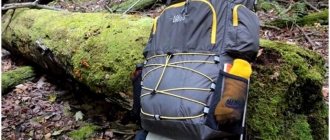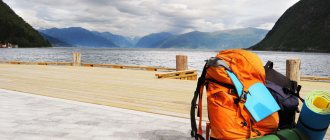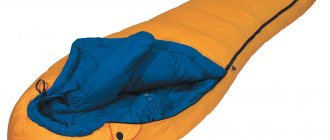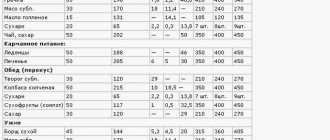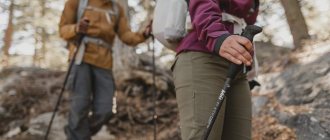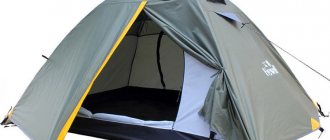Types of backpacks
Urban backpack
A backpack that is relatively small and used for regular daily activities or a day hike. These backpacks have regular slots and pockets for you to carry all your daily essentials and are the most standard and common backpacks of the lot. Check out the best urban backpacks.
Camping backpack
Not to be confused with a travel backpack, these overnight bags are large enough to accommodate personal items and clothing for an overnight trip. It has the same structure as a regular backpack, with additional slots and pockets, and a little more.
Sports backpack
There are plenty of essentials you can take with you throughout your day on the trail. Hiking backpacks are pretty much what you'd expect - lots of pockets, loops and tie-down points, and taller ones may even have a frame, with a hip belt and all.
Mountaineering backpack
A good climbing backpack should also be able to hold rope, helmet, harness, stand and shoes. And ideally it should be comfortable and fit snugly to your body.
Backpack for bicycle
If you're traveling by bike, a backpack is one of the easiest carrying formats to use. You can keep the load comfortably stabilized on your body, and accommodate changes in load with relative ease.
Snowboard backpack
Capacity to carry your skis or snowboards is the most important feature to look for in the backpack you choose for a day on the slopes. Minimizing the movement of a backpack is also very important, so it is important to choose one that fits you snugly without restricting your movement. These backpacks are specially designed backpacks that not only include tether points for equipment, but also airbags to improve survivability in the event of an avalanche.
Business backpack (laptop backpack)
People who work will most likely need a backpack that has a compartment for his laptop and will contain other things he will need, like extra company clothes, shoes, socks and maybe a couple of papers and books. Consider the best laptop backpacks.
Travel backpack
Hiking backpacks should not be confused with those designed for long hikes. They are designed for you to pack and access like you would in a suitcase, as opposed to loading them on top like an outdoor-oriented one. They have many zippered compartments to make your life easier when you don't know what adventure you will have that day. Check out the best backpacks for travel.
Waterproof backpack
If you prefer to get out into the wild in a more active way, hydration backpacks are the ideal solution. Hydration backpacks typically have a capacity of 2 to 10 liters, with 1, 2 or 3 liters of that space taken up by hydration reservoirs. They should fit very tightly to minimize movement but also be very comfortable.
How to choose a school backpack
It’s already August, which means that very soon schoolchildren of all ages and students will set off to gain new knowledge. The road to knowledge involves many accompanying attributes - books, notebooks, albums, laptops, tablets and much more. All of this can add up to a lot of weight, and to help make this road to knowledge as convenient and enjoyable as possible, we will tell you about the best ways to carry these attributes. Today we will talk about school backpacks and some functional urban models.
Let's start with the representatives of the youngest generation of students. Even for first and second grade students, the weight of their entire educational arsenal can be very impressive. Based on this, it is very important that a schoolchild’s backpack correctly and effectively distributes the load on the child’s back, is comfortable and durable enough.
The Deuter company has been sewing backpacks for tourists and climbers of all kinds for more than a hundred years, and it knows exactly how to make sure that a heavy backpack does not cause discomfort and does not let you down at the most inopportune moment. Deuter has skillfully transferred all its many years of experience in the production of equipment into the line of school backpacks, taking into account all the needs of students.
| Our first model - Deuter One-Two backpack . The name of the model speaks for itself - this is a backpack for students in grades 1-2. A functional and roomy backpack, thanks to the ergonomic Active-Comfort system, it is located as close to the body as possible, which allows you to distribute the weight evenly over the entire back, and soft pads make this back very comfortable. S-shaped straps, made taking into account children's anatomy, sit on the shoulders as comfortably as possible, do not press or rub. There is also a removable, adjustable hip belt and a continuously adjustable sternum strap for a more comfortable fit. | |
| Volume: 20 l Weight: 1150 g. | The reinforced bottom and rigid frame allow the backpack to stand upright. A spacious main compartment with a built-in folder pocket, an easy-to-load top flap design, a compartment for school schedules and rulers, a front pocket for small items and two elastic side pockets with reinforced edges - all this will give your child maximum ease and convenience in using the One- backpack. Two. Deuter thinks not only about comfort, but also about safety! Reflective elements on all sides of the backpack will allow the student to be visible even in the dark. |
The next representative of the line is Deuter Ypsilon
. The backpack for schoolchildren is a little older and is more suitable for middle school students. All the same comfort attributes as the One-Two - ergonomic Active-Comfort backrest system, S-shaped straps, removable hip belt and adjustable sternum strap. Plus, the Ypsilon model has additional adjustment of the straps, which allows you to more accurately adjust the backpack to children of different builds and heights. It may seem that the model is not light in weight, but you need to understand that this is the result of achieving maximum comfort characteristics and proper distribution of the load on the child’s body.
| Volume: 28 l Weight: 1340 g. |
Design features - compression straps on the sides will allow you to reduce the volume of the backpack if necessary, a soft handle and a loop for hanging the backpack. Thanks to the reinforced bottom, the backpack stands upright. Spacious main compartment for the size of a folder with a built-in pocket, additional main compartment with a pocket for a school schedule and ruler, Large front pockets for small items such as a wallet, keys, phone, or for a container with lunch. Two elastic side pockets with reinforced edges. There are also reflective elements all around.
A wide selection of colorful colors and various designs will satisfy the needs of even the most fastidious young fashionistas.
Deuter Graduate
– this model is perfect for high school students or students who need a large backpack. Simple yet functional, the Graduate can accommodate just about anything. Be it books, folders, a laptop or a container of food prepared at home for lunch. The clever Airstripes system in the back of the backpack is well ventilated and, in combination with anatomically shaped shoulder straps, an adjustable sternum strap and a removable waist belt, provides a very comfortable fit even with a relatively heavy load.
| Volume: 28 l Weight: 940 g. |
A spacious second compartment for a laptop or folders, a large front pocket with an organizer, side compression straps, a soft carrying handle and elastic side pockets - all this makes the Graduate an easy-to-use, but very comfortable backpack.
| An excellent alternative for high school and college students is the Deuter Giga backpack, a large, roomy backpack that also has a laptop compartment. The backpack has an anatomical shape, back ventilation, soft, adjustable straps. With its anatomical shape, padded shoulder straps and Airstripes ventilation of the back. Volume: 32 l Weight: 1030 g. |
| If you think that in addition to comfort and functionality, a backpack should also be very stylish, then Dakine has something to offer you. The Scramble model will be suitable for high school students or students. Convenient, medium volume will accommodate all the necessary things. A soft pocket for a 15-inch laptop and a pocket for a tablet, compartments with organizers and side pockets will allow you to distribute these things competently and easily. And of course stylish design and colorful prints. Volume: 24 l Weight: 664 g. |
| The Dakine Daytripper backpack will be appreciated primarily by schoolchildren or students who prefer to move around the urban jungle on a longboard or skateboard. The backpack has straps on the front for carrying these shells. Also, the large volume will please those guys whose plans include not only studying, but also various training sessions. 30 liters will accommodate any shift. Volume: 30 l Weight: 657 g. |
For students whose specialty does not imply constantly carrying a large volume of books, papers and other things, who do not like to have anything superfluous with them, but only the essentials, whose educational arsenal consists of only two notebooks for all subjects and occasions, there are convenient ones for all of them and compact backpacks from Deuter – Nomi and Step Out.
| Volume: 16 l, weight: 500 g. | |||
| Volume: 12/16/22 l. Weight: 450/550/790 g. |
These backpacks are quite compact, have a small volume, a minimalist, stylish design and a comfortable, ventilated Airstripes back. Functional features include a main compartment, elastic side pockets and a small pocket on the front. (Step Out 22 has an additional main compartment). Nothing extra. But the choice of colors is quite wide.
How to choose a backpack size
Your goals will ultimately determine your ideal backpack size.
For example, if you want to travel with only carry-on luggage, then you will need to make sure that you choose a backpack that is small enough to do this on various airlines around the world.
But, if you need the space to carry all your camping and outdoor equipment then you may need to buy a larger size such as the 55L+ range, which you will then need to test on your flight.
Every traveler has different packing needs and goals. Maybe you travel for a month or maybe you study abroad for a year. There's probably only so much weight your body can handle (in which case, less is more!). It is important to take the time to recognize these needs before the backpack is purchased.
Minimum size up to 29 l
These small bags are designed for people who want to travel light. These backpacks will include pockets and compartment divisions.
Hand luggage size 30-50 l
Many around the world tourists have traveled with only daypacks, between 30-50 liters, to avoid baggage fees and travel light. Please be aware that bags above 40L will only be hand luggage unless they are full and have a small frame. You may still want to check it, depending on the airline and their specific restrictions.
55L and more
The main benefit of having a large backpack is that you can prepare for more items, which you inevitably do on the road. You'll definitely want to check out this type of bag, but it may come in handy for long trips or outdoor camping trips where you'll have to lug around specialized equipment. However, keep in mind that these bags can become quite heavy when you travel.
Travel backpack size
Trekking backpacks have a wide range of sizes, as they are designed for various types of travel. There are models for climbers and those who like to go on expeditions for a long time, and there are models that are designed for hiking. Depending on the type of outdoor activity, the size of the hiking backpack is selected, measured in liters :
- 20–40 liters (a one-day hike or a two-day hike with one overnight stay, contains the necessary things and equipment with a single change of linen and a small supply of food for two days);
- 40–60 liters (weekend hike, involves packing things for a trip with 2–3 overnight stays);
- 60–80 liters (a hiking trip lasting up to 1 week is possible, the backpack contains all the necessary things and equipment);
- 80–140 liters (huge backpacks designed for very long treks).
Important! Our store consultants will help you choose the right size for your backpack. They also need to be properly adjusted.
The backpack must be selected in accordance with the physical parameters of the person. This is important for maintaining back health and comfortable movement . Stylish urban models are usually produced in small and medium sizes, so problems rarely arise with them. Products for younger schoolchildren and tourists pose a great danger. They need to be selected strictly according to the tables so as not to spoil your own vacation or the health of your baby’s musculoskeletal system.
How to choose a travel backpack?
DIY Yoga Mat Bag
How to choose the perfect backpack
Backpack comfort
Comfort should be number one on your list. Even if you don't usually carry a heavy load, there may come a time when you really need to load a lot of stuff and don't want your back to fall off at the end of the day.
Make sure the packaging distributes the weight of your items evenly. Most sites that offer backpack wearing recommendations suggest wearing them high on your back with the bottom of the backpack at or above your waist. If you think you're going to be carrying a lot of weight on a regular basis, chest, waist or hip belts can make a big difference in relieving stress on your back.
It's a good idea to look for a backpack that suits your build. For example, in a quality women's backpack, the straps will be designed for narrower shoulders, and the hip belt will be designed for wider hips.
Your comfort with a backpack may also vary depending on the size of the backpack and your own height. If you're shopping online and aren't sure what size will fit, look for photos of the backpack the model is wearing. You can usually estimate how tall you are compared to the model, and this should give you some idea of how the backpack will fit your height.
You can also go to a store and try on some backpacks to find out which size is most comfortable for you. The capacity of a backpack is traditionally measured in liters. Small bags that you can fit just your laptop and a few books in are between 10L and 16L, the most versatile are around 20L to 25L, and professional camera bags and weekend bags go up to 30L and above.
If you plan to carry a lot of stuff in warm weather, a mesh cover that sits between you and the backpack can reduce the amount of sweat you get.
Finally, if you have serious physical problems, or if you will be carrying loads that would strain your strength, don't hesitate to consider a wheeled backpack. But keep in mind that if you plan to also carry this backpack, the wheels will add significant weight.
Backpack materials
Once upon a time, backpacks were typically made from cotton canvas that was treated with wax to add waterproofing. It was quite effective, but it was also heavy and if you stored it for any period of time, the canvas would begin to rot.
Nowadays, most backpacks are made from either nylon, polyester, or some variation thereof. For most people they will work just fine. If you're looking for true durability and/or prefer a more textured feel, fabrics like Cordura will provide extra strength.
Of course, if you're looking for something cool, there's nothing better than leather, which is durable, can be made waterproof, and looks great. However, leather will also be much heavier and a reasonable sized leather backpack will put a nice hole in your pocket.
Don't underestimate the importance of zippers: a bad zipper can ruin the usefulness of any backpack. If you're shopping in a store, be sure to test each zipper to see how smoothly they work. Whether in person or online, look for zippers that include rain protection (which is more expensive, but worth it). Also, be aware of 90-degree angles on bags, as it can be difficult or nearly impossible to get the zipper to turn that angle. And choose a bag with metal zippers. Plastic zippers will not last long with daily use.
Some bags have magnetic clasps and clasps. While they can be quick and convenient, they can also be annoying if they constantly miss their target.
Backpack design
Some people will complain because their bags have so many pockets that they forget which pocket they put each device in. Others don't think there can be too many pockets.
The number and types of pockets, loops and other storage options in backpacks today can vary widely and it is a very personal choice as to how comfortable you feel. You can go simple if you want: a main compartment, a padded sleeve for your computer, and maybe two or three small pockets for other things. Or you can get a bag with spaces for dozens of specific uses. Some bags even include removable folders, computer bags, dividers and other modules. (Although modularity may be a polarizing issue for backpack enthusiasts, for smaller items you can buy a camera bag where all compartments are user adjustable.)
Consider the following at a minimum: a padded pocket for your computer, preferably (but not necessarily) separate from the main compartment, and an internal zippered compartment for your wallet or other valuables. You'll probably want to add a couple of exterior pockets for an umbrella and/or water bottle and an easy access pocket for your phone, keys or sunglasses.
There are other design features that can be useful. For example, some backpacks have flat bottoms that allow them to stand on their own, which can be very convenient. They can also look blocky because they don't shrink as you pack. There are even ones that have built-in footrests. Others have tops that can be belted down for lighter loads and then opened when you wear more. If you travel a lot, you'll want a backpack with a pass-through strap at the back so you can attach it to the handle of your wheeled suitcase.
Some backpacks have side access to laptop compartments. While this may be convenient in everyday life, it is not ideal for flying. This means you'll have to pull your bag completely out from under the seat in front of you, rather than just pulling out your laptop.
If you often pack extra clothes, shoes or other gear, consider a duffel backpack with segmented compartments at the bottom for your dirty clothes or shoes.
Worried about theft? Some backpacks offer additional security such as locking zippers, hidden and/or camouflaged pockets, slash-protective material and built-in cables so you can protect your bag if you need to leave it somewhere.
You should also be aware of any size or other restrictions from airlines, conventions or other venues you may attend.
How to choose a women's backpack for the city
The designer variety of accessories for women is, of course, wider than for men, but this cannot always be considered an advantage. For example, manufacturers often rely on attractive appearance, while paying little attention to functionality. Therefore, it is important not to fall for a beautiful wrapper - this way you can buy an uncomfortable accessory that will cause you discomfort while wearing it.
What should you pay special attention to when choosing?
- For the complete set. It all depends on what you plan to carry with you. As with accessories for men, the best choice would be a model that holds up to 30 liters. This volume, for example, will be relevant for young mothers who need to carry a fairly large number of things for the child, or athletic girls who often attend training and carry sportswear or accessories with them. If you don’t carry a lot of things with you, then you can choose the option up to 25 liters.
- For the presence of additional branches. For things that you always take with you when leaving home - this could be a cosmetic bag, keys, phone, etc. If you often carry documents, it is better to have two compartments: one for folders with documents, and the other for other things .
- For dimensions. As for the size of the accessory itself, be guided by your height and torso width, then it will be as comfortable as possible for you to wear.
- For style. The choice here will depend on how and in what situations you plan to wear the accessory. If you have several models in your wardrobe, then you can choose your own option for each style or occasion. For example, compact options suit a casual style and will be appropriate in most situations. Models that are more decorative and similar to pouch bags are not suitable for carrying a large number of things and would rather be appropriate for an evening out or for everyday walks lightly. When it comes to sport-style backpacks, they tend to be more spacious, durable and waterproof, allowing them to hold their shape well and withstand intense daily use. And classic medium-sized models are the most versatile among all types; they are well suited for dates, meeting with friends and walking. Backpacks with a more laconic design will fit perfectly even into a wardrobe where business-style clothing predominates.
- For the material. What material to choose from for a model is influenced by its purpose. If you choose a sports model, then the fabric should be as durable as possible and able to withstand heavy loads, be resistant to stains, etc. For such purposes, synthetic fabric is best suited. When choosing options in a casual style, it is better to also rely on practicality and choose materials such as denim or leather (genuine or eco-leather). As for decorative models, the best choice for them would be genuine leather.
- For design. Models with various prints or embroidery, fringe, etc. are suitable for everyday wear. - such details should fit harmoniously into your wardrobe. For sports backpacks, more practical colors are suitable, including khaki, gray, black, beige, etc. For an evening out or for everyday use, brighter colors would be appropriate. As for more business models, it’s worth choosing discreet classic colors like white, black, beige, etc.
Additional features of the backpack
- Duffle Backpack or Wheeled Backpack: If you're prone to back pain, some bags give you the option of a rolling,
- Front Loading vs. Top Loading: When packing and unpacking frequently, it is important to consider the loading function of your backpack. Top loading, found more in hiking backpacks, provides one access point, which means you have to annoyingly take everything out to find one item underneath. Front loading and suitcase backpacks are usually travel backpacks.
- Sleeping Bag and Tent Cords: Campers who will be camping may prefer cords to attach their sleeping bags and tents to their backpacks.
- Camera and Laptop Protection: Serious people need to worry about their tech gear while staying safe through all the bumps in the road. Some backpacks have padded pockets for laptops.
- External pockets: Having pockets for all those extra knick-knacks can be helpful, whether it's on the back of the bag or on the hip belt. These are great places to store things like tissues and lip balm.
Why are backpack sizes important?
The dimensions of the backpacks let you know about the capabilities and limitations of the products. For example, you can immediately estimate that a 20-liter model is not a suitable option for hiking in the mountains, and a 70-liter model is too big to take to the office every day. Of course, the type of bag plays a role here - tourist, city, school and other types of backpacks are too different in their functions, so you need to immediately decide on your choice. By the way, you can pick up city backpacks here, and school backpacks here.
There is no standard backpack size that will suit everyone. It all depends on the needs of the person and his parameters. If the backpack is too small or large, the load will not be balanced and this can cause severe back pain. In the worst case, an incorrectly sized product can even cause the wearer to fall without maintaining balance. Ideally, a suitable option should be spacious enough to fit a little more than you have to take with you - this will make it comfortable to carry.
What to look for when choosing a backpack for traveling
The best backpacks—those that will last longer and stay in good condition no matter how much you abuse them—have all of the following features that make them strong, durable, and will protect your belongings from the rain.
Waterproof material
While your backpack doesn't need to be 100% waterproof (that is, unless you're going on some kind of long multi-day hike), make sure your bag is made of semi-waterproof material to keep everything from getting wet in the drizzle (most hiking backpacks come with tarpaulin that you can put over them in case of heavy rainfall). Also, make sure that the material will not remain wet for long and thus develop mold. I'm looking for a material that is thick but lightweight. The treated nylon fiber is really good. You should be able to pour a cup of water on it without the insides getting wet. I don't travel much during torrential downpours or monsoons, but I have been caught in small downpours before, and because my backpack is made of good material, I have never opened my bag to find wet clothes.
Lockable zippers
Make sure each compartment has two zippers so you can lock them together. While I'm not too worried about people breaking into my bag and stealing my dirty clothes, I like to lock my bag when I travel.
If your backpack doesn't have two zippers, you can always get a combination lock, which wraps a lockable metal mesh around your entire bag and can be tied to a large object. This means that not only will no one break into your belongings, but they will also not walk away with them.
Multiple compartments
A good bag should have several compartments. This way, you can break down your belongings into smaller sections to make it easier to access and find the things you need. For example, my clothes are in the main compartment of my bag, my umbrella and flip-flops are in the top section, and my boots are in a separate side compartment (that way they don't get everything dirty). This eliminates the need to dig through your bag.
Inner frame
Most backpacks today are internal frame backpacks, meaning the support rods and frame are built into the backpack and hidden from view. However, there are some backpacks where the rods are separate from the actual backpack and stick out (think of those backpacks you see in old travel movies or movies about people traveling through Europe in the 1970s - a big, clunky metal frame). Don't take any of this. Make sure you buy a backpack with an internal frame. Not only does it look better, but the rods won't snag on anything and your bag will also be thinner, making it easier to move around. Additionally, internal frame packs tend to be lighter as the frame is made of carbon fiber or hard plastic, making them lighter on the back as well as more durable.
Soft thigh belt
Most of the weight you will carry will be on your hips, so you will need a padded belt to make it more comfortable to support the weight. The belt will help provide support and distribute the load more evenly across your back causing less strain. The thigh band should also be adjustable so you can tighten it for extra support.
Padded shoulder straps
They make carrying your load more comfortable since the weight of your backpack will also press down on your shoulders. The pads will put less pressure on your shoulders and will also help relieve pressure on your lower back. Make sure the gasket is very thick and one piece of material.
Contoured/padded back
A lumbar backpack makes it more comfortable to wear because it helps distribute weight more evenly—the same principle applies as contoured chairs. It helps relieve back pain. Additionally, this backpack creates a little space between your back and the backpack, allowing air to flow through and keeping you a little cool.
Front loading
A front loading backpack is one that allows you to open the zipper on the side and gain access to all your belongings. Top loading allows you to access your items only from an opening at the top. This makes getting your stuff (especially if it's at the bottom of your bag) really difficult. Always get a "front-loading" backpack so you have easy access to all your gear.
How many liters should a backpack be and what liters are there?
People often ask me in private on VK what size backpack is needed for a hike. The logical answer - for all the junk to fit in, for some reason does not suit everyone
